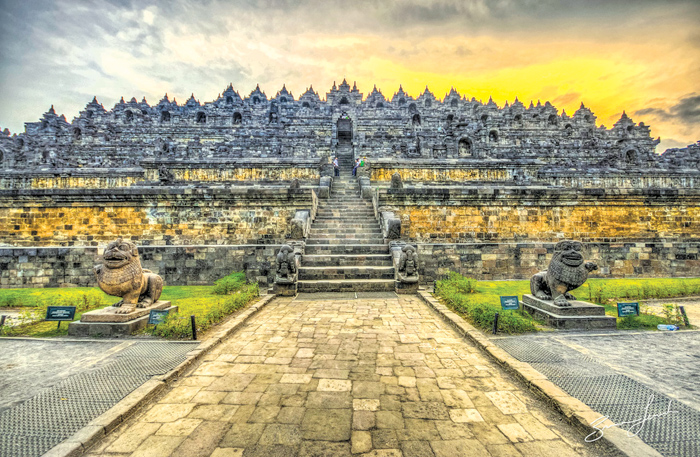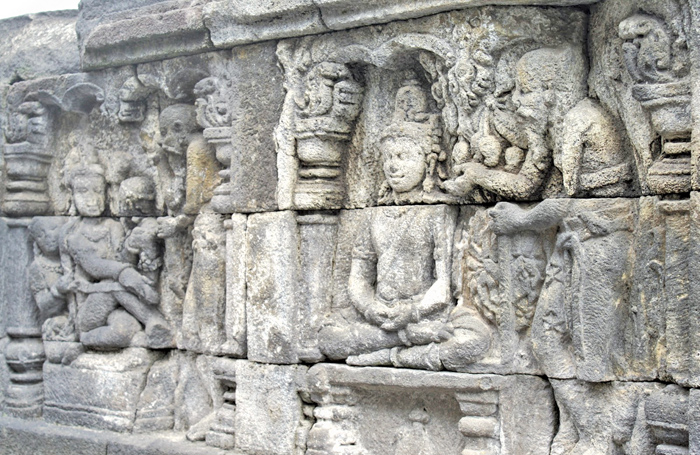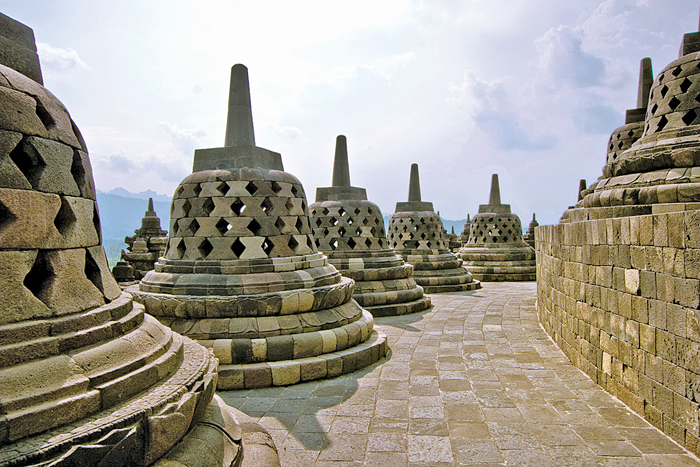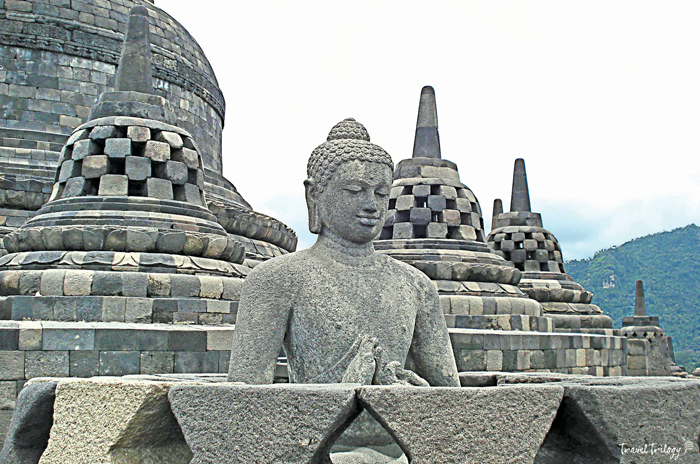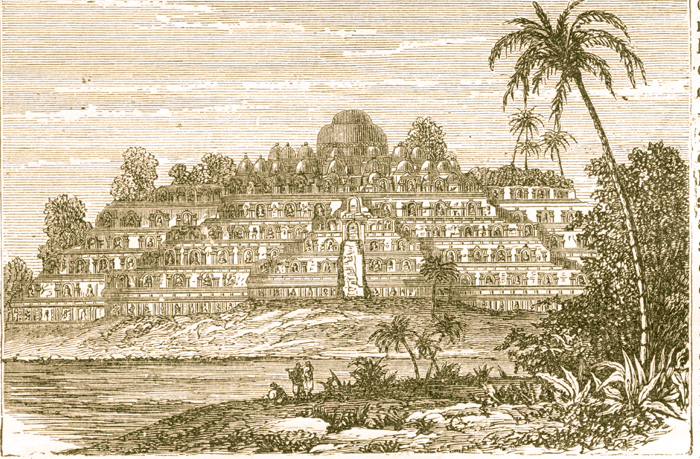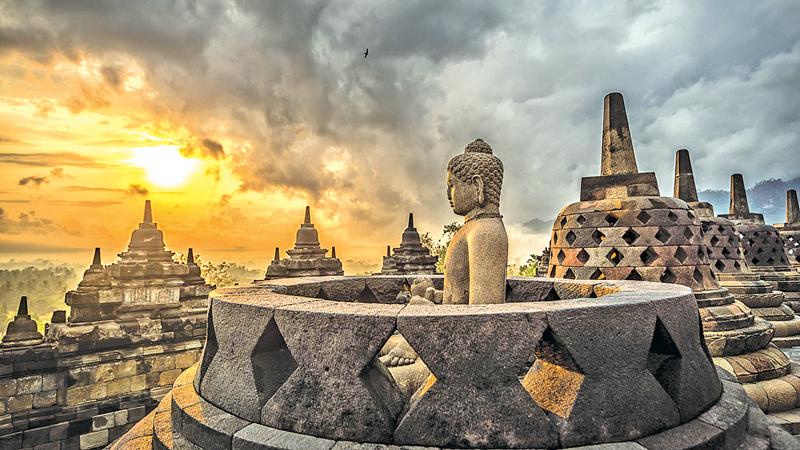
The world’s biggest Buddhist temple is not located in a predominantly Buddhist country, but in Indonesia, where the majority of people follow Islam. The temple is called Borobudur, a fusion of local words which probably means “Buddhist temple on a high place”. It is located in the Java Island in Indonesia. According to rock inscriptions, the temple has been built in the 9th Century AD when Indonesia was a mostly Buddhist and Hindu Kingdom. Historians say it must have taken at least 75 years for the temple to be built with the technology available at the time.
I got an opportunity to tour this magnificent temple during a recent visit to Indonesia. The temple is a stupendous sight from ground level and as you climb higher, it becomes even more breathtaking because it is nestled in a fertile valley dominated by two volcanic mountain ranges. Thousands of local and foreign tourists visit the site every day. Borobudur has more than 500 Buddha statues and 2,670 relief panels depicting various stages of the Buddha’s life. If you take the recommended route right up to the central stupa on the top, you can learn about the Buddha’s life and more importantly, the path to permanent salvation from worldly desires.
Although the temple incorporates Indian art forms, the end result is uniquely Indonesian. Time and vandalism has left some the Buddha statues and sculptures damaged, but the Indonesian Government is now preserving this UNESCO World Heritage Site extremely carefully.
Borobudur is a living temple although now there are no Bhikkus residing there and every year on Vesak in the month of May, a grand Vesak celebration is held here by Indonesian and foreign Buddhists. Vesak is a national holiday in Indonesia, which is the only predominantly Muslim country to observe Vesak.
Borobudur was practically lost to the world since the 14th Century when it was abandoned. It was Sir Thomas Stamford Raffles, the then Governor of Java, who rediscovered Borobudur in 1814 after locals informed him about the site overgrown with jungle and buried in vo lcanic ash. Borobudur underwent several restorations over the last two centuries (most recently from 1975 to 1982).
Incidentally, Raffles went to establish the trading post of Singapore, from where Yogyakarta, the closest city to Borobudur, is just two hours away by air.
If you have time to tour just one place during a visit to Indonesia, make it Borobudur.
